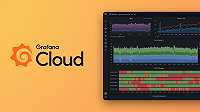Migrate from Grafana Agent Flow to Grafana Alloy
This topic describes how to perform a live migration from Grafana Agent Flow to Grafana Alloy with minimal downtime.
Note
This procedure is only required for live migrations from a Grafana Agent Flow install to Alloy.
If you want a fresh start with Alloy, you can uninstall Grafana Agent Flow and install Alloy.
Before you begin
- You must have a Grafana Agent Flow configuration to migrate.
- You must be running Grafana Agent Flow version v0.40 or later.
- If you use auto-scaling make sure you disable auto-scaling for your Grafana Agent Flow deployment to prevent it from scaling during the migration.
Differences between Grafana Agent Flow and Alloy
By default, you can only use functionality marked Generally available.
You can enable functionality in Experimental and Public preview by setting the --stability.level flag in run.
- The default value of
--storage.pathhas changed fromdata-agent/todata-alloy/. - The default value of
--server.http.memory-addrhas changed fromagent.internal:12345toalloy.internal:12345. - Debug metrics reported by Alloy are prefixed with
alloy_instead ofagent_. - The “classic modules”,
module.file,module.git,module.http, andmodule.stringhave been removed in favor of import configuration blocks. - The
prometheus.exporter.vspherecomponent has been replaced by theotelcol.receiver.vcentercomponent.
Steps
Prepare your Grafana Agent Flow configuration
Alloy uses the same configuration format as Grafana Agent Flow, but some functionality has been removed.
Before migrating, modify your Grafana Agent Flow configuration to remove or replace any unsupported components:
- The “classic modules” in Grafana Agent Flow have been removed in favor of the modules introduced in v0.40:
module.fileis replaced by theimport.fileconfiguration block.module.gitis replaced by theimport.gitconfiguration block.module.httpis replaced by theimport.httpconfiguration block.module.stringis replaced by theimport.stringconfiguration block.
prometheus.exporter.vsphereis replaced by theotelcol.receiver.vcentercomponent.
Deploy Alloy with a default configuration
Follow the installation instructions for Alloy, using the default configuration file. The configuration file is customized in the following steps.
When deploying Alloy, be aware of the following settings:
- Alloy should be deployed with topology that’s the same as Grafana Agent Flow. The CPU, and storage limits should match.
- Custom command-line flags configured in Grafana Agent Flow should be reflected in your Alloy installation.
- Alloy may need to be deployed with the
--stability.levelflag in run to enable non-stable components:- Set
--stability.leveltoexperimentalif you are using the following component: - Otherwise,
--stability.levelmay be omitted or set to the default value,generally-available.
- Set
- When installing on Kubernetes, update your
values.yamlfile to rename theagentkey toalloy. - If you are deploying Alloy as a cluster:
- Set the number of instances to match the number of instances in your Grafana Agent Flow cluster.
- Don’t enable auto-scaling until the migration is complete.
Migrate Grafana Agent Flow data to Alloy
Migrate your Grafana Agent Flow data to Alloy by copying the contents of the Grafana Agent Flow data directory to the Alloy data directory.
- Linux installations: copy the contents of
/var/lib/grafana-agent-flowto/var/lib/alloy/data. - macOS installations: copy the contents of
$(brew --prefix)/etc/grafana-agent-flow/datato$(brew --prefix)/etc/alloy/data. - Windows installations: copy the contents of
%ProgramData%\Grafana Agent Flow\datato%ProgramData%\GrafanaLabs\Alloy\data. - Docker: copy the contents of mounted volumes to a new directory, and then mount the directory when running Alloy.
- Kubernetes: use
kubectl cpto copy the contents of the data directory on Flow pods to the data directory on Alloy pods.- The data directory is determined by the
agent.storagePath(default/tmp/agent) andalloy.storagePath(default/tmp/alloy) fields invalues.yaml.
- The data directory is determined by the
Migrate pipelines that receive data over the network
Telemetry pipelines which receive data over the network (for example, pipelines using otelcol.receiver.otlp or prometheus.receive_http) should be configured in Alloy first:
- Configure Alloy with all pipelines where telemetry data is received over the network.
- Reconfigure applications to send telemetry data to Alloy instead of Grafana Agent Flow.
Migrate the remaining pipelines
Migrate remaining pipelines from Grafana Agent Flow to Alloy:
- Disable remaining pipelines in Grafana Agent Flow to prevent Flow and Alloy from processing the same data.
- Configure Alloy with the remaining pipelines.
Note
This process results in minimal downtime as remaining pipelines are moved from Grafana Agent Flow to Alloy.
To completely eliminate downtime, configure remaining pipelines in Alloy before disabling them in Grafana Agent Flow. This alternative approach results in some duplicate data being sent to backends during the migration period.
Uninstall Grafana Agent Flow
After you have completed the migration, you can uninstall Grafana Agent Flow.
Cleanup temporary changes
You can enable auto-scaling in your Alloy deployment if you disabled it during the migration process.



